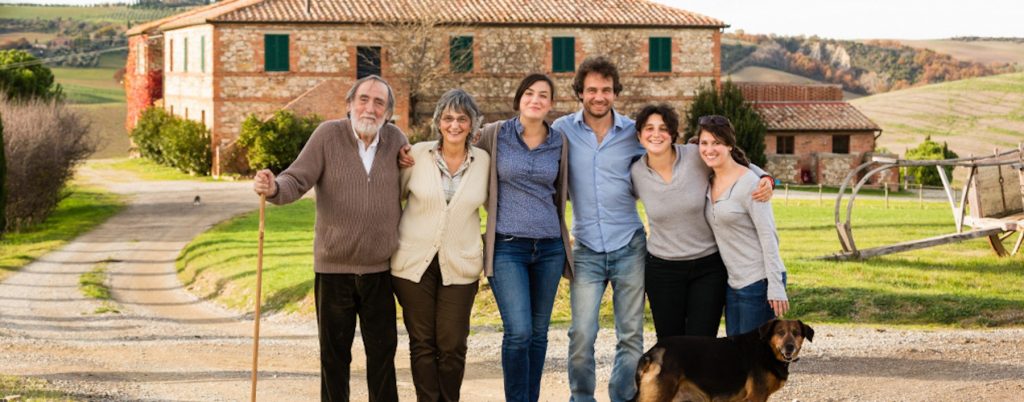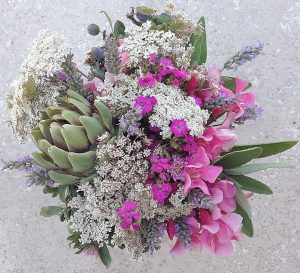Who watched the Royal Wedding? Who felt a tear in their eye as we learned that Meghan Markle’s simple-bunch bouquet contained flowers that were favorites of Princess Diana, picked – and here’s the kicker – in the castle garden by Prince Harry? Now that is saying something!

Flowers have long had all sorts of symbolic connotations and that’s been the subject of countless books. Much poetry, too, depends on imagery drawn from nature, with flower language providing the most provocative – and often pungent – meanings. The Reverend Hilderic Friend penned one of the an exhaustive two-volume work on the subject, titled Flowers and Flower Lore. Published in various editions throughout the 1880s to at least 1900, it was a guide to the ancient and traditional meaning of plants, and added just one more floral lexicon to the gardener’s library.
But what we are looking at today is something quite different. At a wedding I attended not so long ago, the bride had grown all her own flowers from seed (and many of the vegetables served up with the wedding feast). Each blossom signified a moment or a person in her life and the groom’s. Each table had a tiny centerpiece assembled from the same flowers. How much more enchanting that one of the killer bouquets I wrote about last June – fashion being a pendulum, we’ve swung from ostentatious to modest in the space of one year.
In that story I wrote about the Slow Flower movement in the USA, but it and the farm-to-table movement have global reach, and in many instances combine. For example, Tuscany is a favorite destination for all sorts of reasons, and rural stays top the list through the Agriturismo organization. For newlyweds there are Agriturismo lodgings that offer the whole package, from the venue to flowers in the bouquet. Among them the fully organic and exquisitely run Agriturismo Il Rigo sets the standard—and I am not a newlywed, just a well-satisfied guest.


The team at Il Rigo works with couples to create their dream of intimate, natural, and eco-friendly weddings, which is line with their ethos of using local produce, home-grown organic food and decorations that are seasonal, gathered either from Il Rigo’s organic garden or the hedges and meadows of the surrounding countryside. Talking with host, Luisa Cipolla, she explained that, “When we started hosting weddings in our home, we understood that providing natural decorations with wild and home-grown flowers was essential, also because Italy is a bit “late” in embracing a more natural style and flower design, and it’s impossible to buy from local organic growers, as there are none here! By here she refers to the Val d’Orcia region between Pienza and Sienna, a stark but extraordinarily beautiful agrarian landscape of the Crete Senesi.
Not every bridal couple can walk into Granny’s castle garden to pick a bouquet, but Luisa works hard to make each couple feel like royalty. While trying to fulfill their specific requests about colors and composition, she will point out that not everything is possible from her garden, and if they want organic they must avoid flower shops: when I tell them that it is impossible to find organic flowers in the shops, and that some, like delphiniums, roses, hydrangeas, mostly come from Holland, and are covered in preservatives, they change their mind and agree to replace that special variety with a flower that grows here and is in season!”

While her garden provides many of the beloved cottage-garden annuals, like marigolds, asters, larkspur and peonies, the challenge of wild flowers and foliage gleaned from hedgerows adds another dimension to arranging a lush bouquet. There are many shapes, textures and tints to choose from, but they are subtler – and trickier to work with, as they don’t last as long as garden-grown blooms, so many more are needed.

For table décor, Luisa recommends everyday containers like jam jars, boxes, tin cans, even beer bottles (collected for her by friends!). “I love to recycle and I’m not a big fan of disposable wedding gadgets.” All this, of course, fits with the down-to-earthiness of Il Rigo, which as Luisa makes clear, was originally a humble farmer’s home, “not a sophisticated villa.”
Slow-weddings and slow-flowers are just one facet of the “slow movement” spear-headed by Slow Food International , an organization, which was founded in 1986 in Italy by Carlo Petrini to promote local food and culinary traditions. Today, there are chapters in every major city; a Slow Food Nations summit to be held in Denver, Colorado in July will address the threat to biodiversity in the agricultural landscape, where it is estimated that just 30 crops provide 95% of the food we eat, and that genetic diversity has dropped by 75%. I plan on being there, so watch this space. And I might even pin a garden-picked corsage to my T-shirt.
© Ethne Clarke, 2018. Photos courtesy of Agriturismo Il Rigo, Loc. Casabianca, 53027 San Quirico d’Orcia SI, Italy.


